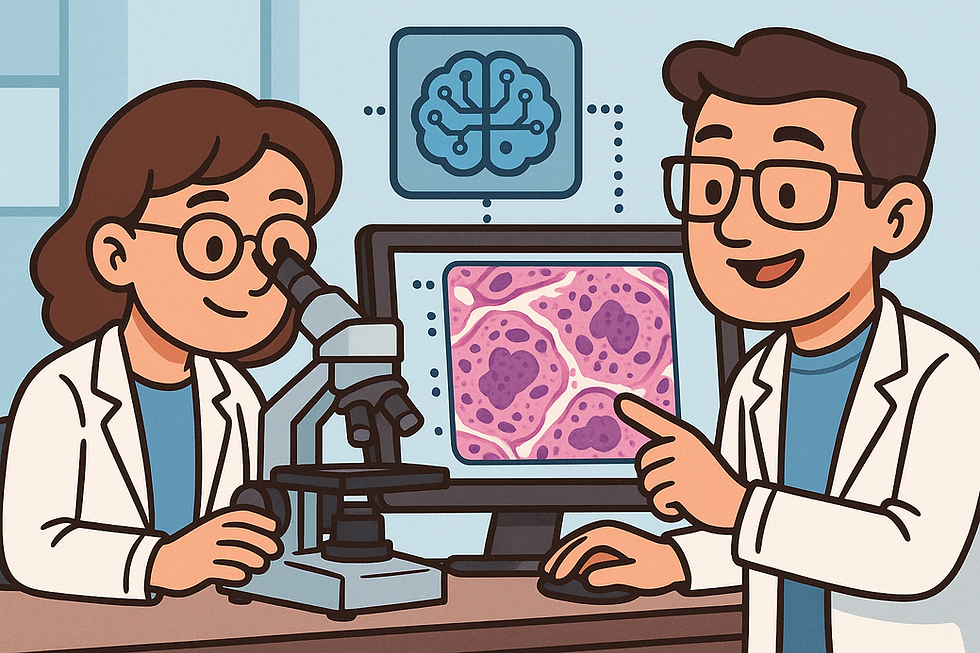How Hilo is rethinking blood pressure measurements
- Zofia Krajewska
- Jul 13
- 3 min read
Updated: Aug 21
For decades, tracking blood pressure has been the same clunky ritual: dig out the cuff, sit still, wrap it tight, press the button, wait for the squeeze. Then, jot down the numbers (and remember where you wrote them down). It’s a process most people avoid unless they’re already sick. But what if the most dangerous part of hypertension is exactly that invisibility? What if tracking blood pressure could feel as effortless as wearing a watch?
That’s the idea behind Hilo, the Swiss startup formerly known as Aktiia. Tucked away in Neuchâtel’s medtech corridor, this company is building what might become one of the most important health devices of the decade: a wrist-worn, cuffless blood pressure monitor that takes readings passively and continuously. And now, with FDA clearance and a $42 million Series B, Hilo is ready to make noise.

Beginnings of Hilo
Hilo’s story starts not in Silicon Valley, but inside the labs of CSEM, a Swiss research institute known for spinning out precision medical tech. There, physicist Dr. Josep Solà spent over 15 years researching non-invasive methods to track cardiovascular signals using light, a method known as photoplethysmography, or PPG. Solà, along with co-founders Mattia Bertschi and now-CEO Raghav “Rags” Gupta, believed they could transform this research into a wearable that would track blood pressure the way smartwatches track steps. No cuffs, no user input, no friction; just clean, passive data.
From there, Hilo took off. In 2021, it became the first company to secure CE-marking for a cuffless BP monitor, meaning it met rigorous clinical standards in Europe, and by 2023, they’d sold over 100,000 units across the continent.
Why Hilo? Why now?
The stats are staggering: over 1.3 billion people globally suffer from high blood pressure, making it the world's leading risk factor for death, contributing to strokes, heart attacks, and kidney failure. And yet, most people measure it once a month, at best. Others don’t measure it at all -- cuff-based monitors are invasive and awkward. By the time a problem shows up, it's often too late. Hilo’s solution? Build something so seamless it disappears into daily life.
With optical sensors embedded in a sleek wristband, Hilo’s technology captures pulse waveforms and translates them into blood pressure readings using a proprietary AI model trained on tens of billions of signals. The device takes measurements every 90 minutes, even while you sleep, creating a rich, real-time picture of your cardiovascular health.
Where are they now?
In July 2025, Hilo became the first company to receive FDA 510(k) clearance for an over-the-counter, cuffless blood pressure monitor in the U.S. -- a major milestone in what’s historically been one of the most conservative corners of medtech. It represents a true pivot from academic credibility to consumer visibility. The company is now set for its US launch in early 2026, where the market for blood pressure devices is expected to exceed $1.7 billion by 2028.
Backing the vision is a strong lineup of investors. The $42 million Series B, closed in May 2025, was led by Earlybird Health and Wellington Partners, with participation from Molten Ventures, Khosla Ventures, Verve Ventures, and others. In total, the company has raised over $100 million since its inception.
What’s Next?
Hilo’s immediate focus is on ramping up U.S. distribution, building partnerships with health systems, and expanding its AI platform. They're also experimenting with smartphone-based blood pressure monitoring, a potential gateway for billions without access to wearables. Behind the scenes, Hilo’s AI model continues to evolve, ingesting hundreds of millions of data points to improve personalization, detect anomalies, and eventually guide medication decisions.
In the long run, Gupta envisions a full cardiovascular health platform that blends continuous monitoring with predictive insights and even behavior nudges. If they succeed, blood pressure readings might go from something you dread to something you barely notice.




Comments